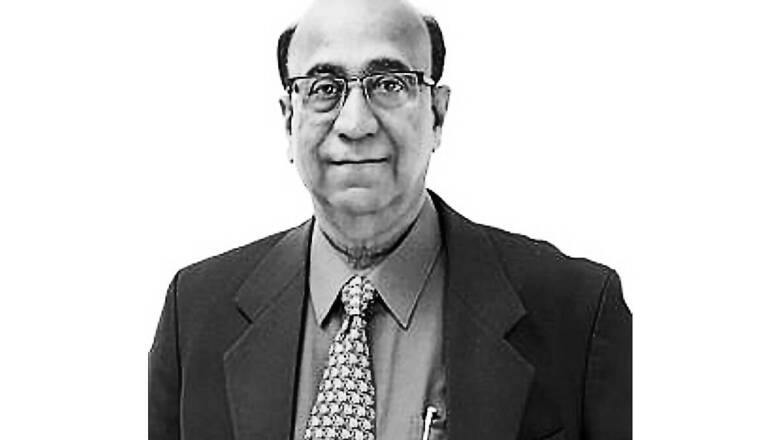
views
On August 15, 1995, Videsh Sanchar Nigam Limited (VSNL) introduced internet to the common user in India, heralding a new era of connectivity throughout the nation. The first traces of connectivity came in to the metropolitan circles at a princely speed of 9.6kbps, at a fairly steep cost as well. 25 years later, we today stand at over a billion connected devices across the nation, with over 500 million internet users coming from rural circles as well. How, though, did the process go about, of bringing the all important internet connectivity to our country?
Dr. Srinivasan Ramani, who played a significant role in creating ERNET – the precursor to the internet in India, is an inductee in the Internet Hall of Fame for his work in setting up an online connection between India and international servers for the very first time, back in the '80s. Originating out of research teams based in premier Indian institutes, ERNET's pioneer Ramani documented the earliest days of the Indian internet in a chapter of his book, Netch@kra.
The following is an unedited excerpt from the chapter that changed India's future of connectivity forever.
What have ERNET team members all over India achieved? We set out to build India's academic network and succeeded in doing that. We did that as a nationwide academic coalition of eight institutions of higher learning and R&D. Working together to win gives you a high, as all sportspersons know. So, how we did it was as important as what we did. In the process we brought the Internet to India.
This is a subjective view of a small but important part of the IT Revolution in India - the arrival of computer networking and the impact it made on many aspects of our lives. It was part of something bigger - electronic and digital revolution that brought us computers and a plethora of communication facilities.
I had the pleasure of having an early introduction to electronics and communication as a high school kid in the early fifties. A friend of mine, Mahadevan, and I used to haunt second hand bookshops to buy used copies of Popular Science and Popular Mechanics magazines. This led to a fascination with "crystal radios" that could be built for Rs 15 in those days but after several visits to the Moore Market in what was then the city of Madras (now Chennai). The heart of the crystal radio was a small stone-like crystal glistening with its Germanium content. It sat in the metal cup of a broken torch light bulb. A bent wire made precarious contact with it. This was our homemade diode! I built a regenerative one-tube radio receiver the next year. Not surprisingly, I went on to study Electrical Engineering for my Bachelor of Engineering degree and Electronics for a Masters.
Then came five years of work and study during the sixties at the Tata Institute of Fundamental Research (TIFR), earning a PhD and getting deeply involved in the science and technology of computing. There was the magic of software and the grand ambition of artificial intelligence.
The Seventies
I did a couple of years of research at the Carnegie-Mellon University (CMU) in Pittsburgh as a post-doc during 1971-73. That is where I encountered email and learnt about the pre-natal developments of what has now become Internet technology. The Advanced Research Projects Agency (ARPA) had funded the creation of the pioneering network, ARPANET. CMU was a node on this network and so I became one of the first few hundred users in the world of computer networks and email. The fact that one's terminal was a rickety old teletype that went clack-clack at 110 bits per second did not discourage anyone. One could also "telnet" into computers in other cities, but this turned out to be a minor attraction in that period except for my friends in the physical sciences. Intercity email was used mostly for science and technology communication like for asking authors for their reprints, in fact their e- prints, though the term was invented only later on.
One of the considerations behind the creation of ARPANET had been the fact that packet switching networks are resilient against failure of equipment and communication links. That meant that packet switching does not need a perfect communication system, as long as there are communication links even if they are noisy (error-prone). It would make up for weaknesses of the underlying communication network. Secondly, there was the magic of message switching. You don't have to suspend what you are doing and run to your computer terminal the moment an email arrives as you rush to the phone when you receive a phone call. Email gets stored somewhere and waits for you to log in at your convenience. Packet switching nodes, basically what we now call routers, handle noisy communication links well. If an information packet does not get through properly, the receiving end complains to the sending node that packet number x was not received. The sending node makes up by sending a copy of x. I recognised that a developing country like India needed this technology very badly; there was no doubt about noise on our communication links. Our communication network was growing day by day. As new communication links come up, it would be easy for routers to recognise the new resources automatically and start using them. The routers resemble "intelligent" controllers in their ability to do the right thing at the right time and to coordinate with their neighbours, without obeying a master in an engineering bureaucracy.
The excitement with these ideas was enough to make me decide that my first love from then on would be computer communication. The old flame of artificial intelligence (AI) and its educational applications continued to get some share of my attention. I did not feel there was anything wrong in this switch of affection. Networking was highly relevant to development at the national and global levels. Computer communication was soon to prove its great value as a tool for communication and information sharing in the academic world. AI was an affair for the long term.
I returned to India in 1973 and got involved with the National Centre for Software Development and Computing Techniques (NCSDCT) that was coming up at TIFR, under the leadership of Prof R Narasimhan. Prof MGK Menon, then Deputy Director of TIFR, was an enthusiastic supporter of NCSDCT. The 'intelligence' of modern networks is a phenomenon created by software handling complex situations in appropriate ways, going beyond anything that hardware alone could. So, we created a place in the NCSDCT's plans for work on computer network software.
This was the era of self-sufficiency and development of indigenous capabilities. The Electronics Corporation of India Limited (CIL) was building mini-computers - TDC-12 and TDC-316. NCSDCT was funded by the then Department of Electronics, Government of India. So, it was natural for me and my team to use the TDC-316 for our experiments in computer networking. We felt that the TDC-316 could run as a remote station for the Digital Equipment Corporation's DEC-1077 that served NCSDCT and TIFR as the major computing facility. The remote station could be located anywhere that was reachable by a telecom leased line. Dial- up had not been heard of in India by then.
DEC had defined a protocol named the Digital Data Communications Message Protocol (DDCMP). We decided to use it for creating communication software for TDC-316. My colleagues, Anant Joshi and, Vinod Kumar were involved in this effort and soon the TDC-316 based remote station was a reality, based on communication software developed at NCS- DCT.
The remote station was moved to the then Victoria Jubilee Technical Institute in 1976 and commissioned. It was connected by a leased line from what was then Bombay Telephones, and provided with a card reader and printer. Online terminals were added on at a later date. This extended TIFR's computing facilities to Veermata Jijabai Technological Institute (VJTI). The remote station was used heavily in a one year post graduate programme on computer applications from 1977. This course later morphed into the Post Graduate Diploma course in Software Technology run by the NCSDCT and was conducted at VJTI for a number of years. In time, this became the model for many other post graduate diploma courses that came up in the computer field all over India. We attracted the best and the brightest participants, as we were the only show in town in this field in part time education!
Prem Prakash Gupta PPG, then Managing Director, Computer Maintenance Corporation Ltd. (CMC) used to be a frequent visitor to the NCSDCT. He was a visionary who encouraged people to take on ambitious R&D projects. In 1977, I reviewed the proposal from abroad received by an Indian entity for a message switching system worth crores of rupees. It involved specially built fault-tolerant hardware and used old software technology. I felt that we could do a lot better using new technology. One could use minicomputers that were being mass produced, were simpler and more rugged than old hardware. We could build communication software written in a higher level language to run on top of such hardware and a real time operating system (OS), and create our own message switch. Such a system would cost a fraction of the foreign product, though it would use an imported minicomputer and real time OS. The communication software would be easily maintainable and the source code would be the property of the Indian entity that created it. Driving me was the firm conviction that store forward message systems were going to be important.
PPG readily agreed to launch this as a CMC project and constituted a small CMC team, headed by SG Wagle, to work with us. Mr. KVS Prasad and I constituted the NCSDCT team. We had the right minicomputer required and the real time OS. Besides, we were excited about Pascal and decided to use it as the language to develop the software. What about an application? I felt that a real world test bed would be necessary and approached P Unnikrishnan who was then the General Manager of the Press Trust of India (PTI). Here again we got ready acceptance of the proposal; CMC bought a mini to be located at PTI and created a work area there suited to running a 24x7 computerised operation. The higher level language, Pascal, enabled code to be created very quickly. A prototype was running in ten months. It used PTI's few dozen Telex channels from many cities to provide input, and handled online editing and automated transmission to subscribers all over India. CMC's investment paid off very soon; PTI decided to computerise its system completely and placed an order on CMC.
CMC's projects of that era demonstrated that using imported computers was a valuable idea. What mattered was not so much the building of hardware but creating very relevant and important applications. They taught those involved that Indian technologists stood to gain by standing on the shoulders of worldwide technology, and not by running a me-too operation!
Soon after this, one of the world's leading message system companies approached Tata Consultancy Services Ltd (TCS) to see if a new technology message switch could be created for them in India. NCST had the pleasure of joining TCS colleagues to present to the customer what had been done in India and to tell them that NCST's facilities would be available to TCS for the project if they were to get the order. TCS did get the order and used NCST equipment to implement their own message switching software meeting the needs of its customer.
We became more ambitious after these successes. The Indian Space Research Organisation (ISRO) was planning a communication satellite named APPLE, and in 1978 the NCS- DCT team in computer communication was invited to propose inter-city computer networking to be demonstrated using the facilities provided by this satellite. The team had been following early experiments in running packet-switching networks over satellite channels conducted by US and British scientists. Prof. Norman Abramson, credited with the invention of the first contention protocol, ALOHA, had visited NCSDCT to give a short course on computer communication using wireless media.
The proposal for a Computer Network Experiment (COMNEX) was the joint creation of three entities, NCSDCT, the Space Application Centre (SAC), Ahmedabad, and the Telecom Research Centre (TRC), Delhi. NCSDCT brought software and networking protocol know- how, SAC and TRC satellite communication know-how. The proposal was quickly accepted and we were off to a flying start. Working on a small budget, we ordered motherboards to build three low-end minicomputers, created a real-time monitor, and chose to write our soft- ware using a framework named Communicating Sequential Processes. This was our first experiment with a message passing architecture. We wrote a compiler for the language we used. Again, my colleagues, Anant Joshi and Vinod Kumar implemented the software. Simultaneously, we began work to build an earth terminal; a couple of decades later, we were to jokingly refer to it as the world's largest VSAT (Very Small Aperture Terminal). A small two-storied octagonal tower was built to house the 20' antenna that was to be created by the TIFR Workshop. It also housed the satellite communication equipment built by SAC. This tower sat in the TIFR garden behind the Home Bhabha auditorium. By 1979 standards, an antenna 20' in diameter was a small one to communicate with a communication satellite operating in the extended C-Band. TRC committed to design and build a 32 kbps modem. The modems running on our leased line to VJTI were initially 1200 bps ones, getting gradually replaced over the years by 4800 and 9600 bps modems. The 32 kbps satellite-channel modem was like a hot rod in comparison. SAC gave us their design for the 20' antenna and we proceeded to build the antenna in the TIFR workshop, buying tons of steel and aluminium for the purpose. The parabolic surface had to be accurate to the design within millimetres. A big crane had to be borrowed to hoist the parts on to the terrace of the tower for installation. Meanwhile mini-computers built using the motherboards had been housed in three hand-crafted wooden trunks complete with small fans. I suspect that each box weighed over 30 kilos when every- thing, including the power supply was installed in it. One box each was shipped to SAC and TRC. Much to our surprise, all these unbelievable contraptions soon got to work. Months of hard work had gone into this effort, but it was still amazing to see such a complex, home-made network operate using three nodes in three different cities. In October 1980, SAC organized a special symposium to demonstrate the network to over a hundred participants.
Early Network Applications: Three of us came together to run Networks-80, the International Symposium on Computer Networking, run under the banner of the International Federation of Information Processing - PPG of CMC, Hemant Sonawala, Chairman of the Hinditron Group and myself. As far as I know, this was the first international conference in a computer related area in India. We set an ambitious goal for ourselves - to demonstrate that computer networks can contribute significantly to our developing economy and to improvements in the quality of life of the average Indian. We planned three major demos: a prototype of a railway reservation system, an email system and an overseas demo of the pioneering Prestel system developed in the UK. My colleagues at the NCSDCT, P Sadanandan and his associates developed the prototype railway passenger reservation system and the email system. VS Rao played the central role in developing the email system that was demonstrated on the DEC-10 computer system at the NCSDCT. It could be accessed remotely over a data link equipped with modems. Prestel was demonstrated using a remote link from Mumbai to London. Michael Miller from British Telecom gave the demonstration and presentation. The railway reservation system prototype demonstrated could not use live data from Bombay, Ahmedabad and Delhi as planned originally; a high level officer in Railways who had been interested in the project had retired. However, all three demos worked their magic, convincing a number of organisations and professionals about the feasibility of implementing full-fledged projects of this type and the potential benefits of doing that. It is worth noting that Prestel carried the seeds of the World Wide Web, which was to be conceived over a decade after 1980 when Networks 80 was held.
The wheels of Railways grind slowly but surely. In 1985, they accepted PPG's proposal for CMC to implement a full-fledged railway passenger reservation system for the Northern Railway. A year later, Railways asked CMC to extend it to other major cities, which it did making the first major IT contribution to the quality of life of the average Indian. CMC also went on to implement a wide area network named the Indonet in 1986.
Whatever I had learnt about satellite communication from ISRO colleagues led me to dream of many things. One of these resulted in a proposal for a new form of satellite named the Low Altitude Data Satellite primarily to carry email. This proposal was created by me and a colleague, R. Miller, during the few days we were together attending a Workshop organised by the International Development Research Centre (IDRC) in Canada.
If the distance between two communicating locations was more than 2,000 kilometres or so, the low altitude satellite may not have line of sight to the source as well as the destination at the same time. In that case, it would store the email from the source in an onboard memory and "carry" it physically to a suitable place from which it could be transmitted to the destination. Our proposal also included a provision for the use of a packet switching protocol to provide online connectivity between two locations, which could have simultaneous line of sight with the satellite. If one of them was on a packet switching network, like the current Internet, the satellite would provide the "last mile solution", that is connectivity between an end-user location and a suitable node on the network. As the satellite went round the earth in one and a half hours or so, there would be periods up to 20 minutes long during which it would have simultaneous communication with a user and an earth terminal connected to a computer.
National Centre for Software Technology (NCST): This centre was created by a core team coming from the NCSDCT at TIFR. One of the three major areas that NCST had chosen to work on was Computer Networks and Real Time Systems. I had the privilege of being the Director and the Head of the Networks and RTS Division. NCST had chosen to put its bet on the Unix operating system (OS), and became the first organisation in India to run a large computer (VAX-8600) on Unix. The VAX-8600 came with its own OS named VMS, but NCST canned this VMS OS, and used Ultrix instead; Ultrix was DEC's adaptation of Unix. This choice was to make a major impact on networking activities in India in the late eighties and early 90's, for Ultrix was based on the public source BSD and included the suite of computer net- working software developed in the US for Unix. So, our team had a head start in adopting the technology that was to develop later into Internet technology. Software to handle synchronous and asynchronous data links, to run an email hub, and to use the TCP/IP protocol to create wide area networks was all there in Ultrix. In fact, we had bought the source of BSD Unix for US$ 70 or so, the cost of handling and shipping. This was roughly in 1985-86.
Education and Research Network (ERNET): I had written a proposal in 1983 saying that India needed a nationwide academic network and appealed to the then Department of Electronics (DoE), Government of India, to launch a project to do this. Colleagues at IIT-Delhi had also written a proposal to enable academic networking. Mr Prem Prakash Gupta had been appointed Secretary to Government of India by that time. Being very familiar with applications of computer networks, he gave his ready blessing to the proposal. Mr. S Ramakrishnan, a young officer at the DoE at that time, got involved in DoE's efforts to seek funds for it and to launch the project. The United Nations Development Program (UNDP) was requested to give assistance to the project and they acceded to this request. Young faculty members at five IITs (Bombay, Delhi, Kanpur, Kharagpur and Madras), and at the Indian Institute of Science, Bangalore, who had expertise in this area were invited to form a core team along with Ramakrishnan and myself. In the beginning, an experienced communications specialist, a former Deputy Director General, Telecom Department, Government of India, on deputation as Joint Secretary, DoE was in charge of the project's administration.
Ramakrishnan was an alumnus of IIT Madras and thought and behaved like an academic staff member rather than as a bureaucrat. With his support, the eight institutions involved (the six mentioned above along with NCST and DoE) cooperated to create the nationwide ERNET. More than the technology that ERNET brought to India was the cooperative culture it promoted among national institutions. Coordinators at the eight institutions dealt with each other as collaborators, and did not have any hierarchy weighing them down. They brought the biggest strength of these institutions to the ERNET project, their fast-learning and enthusiastic bands of students and young professionals.
ERNET aimed at furthering network R&D in addition to creating an academic network from the very beginning, though I am not going to cover this part of the work in much detail in this chapter. R&D funding was given by the DoE for this purpose. Many of those who carried operational responsibilities also carried R&D responsibilities. The NCST team developed an X.25 PAD very early in the project and successfully transferred the know-how. Concepts such as that of an adaptive contention protocol and a packet broadcasting system were developed for use over satellite channels. There was also theoretical work on encryption and computational complexity.
Connecting to the Internet
The year 1986 saw a dial-up link running UUCP for email exchange being established between NCST and IIT-Bombay. 1987 saw IIT-Madras and IIT-Delhi connecting to the NCST VAX 8600 by dial-up. This machine became the dial-up hub named shakti.ncst.ernet.in. Very soon all ERNET partners were on dial-up ERNET email and hundreds of Indian academics in these institutions started using email to talk to colleagues all over the world, using a dial- up link between Shakti at NCST and a router at the Centrum voor Wiskunde en Informatica (CWI) in Amsterdam. A member of the ERNET team at NCST, Anil Garg, played an important role in Internet-related activities at that time. We had earlier found him a UNDP Fellowship which took him to the University of Wisconsin at Madison. The Internet-related experience he gained there came in handy for the NCST team. Shrikumar, who joined NCST at about this time, also played a significant role. Mr. Bharat Desai and his team contributed in a big way, handling set up, installation and maintenance of hardware and software. Sanjay Pathak, with his dedicated colleagues, took on full responsibility for 24x7 operation of the hub. This experience has resulted in his playing a key role in a number of ISPs later on.
CWI was a big international hub for email and had good connectivity to a number of countries including the USA. India had arrived on the Internet in 1988, though the umbilical cord was working at only 4800 bps. Interesting things started happening. NCST used to work with the Press Trust of India on R&D projects. One of them involved archiving PTI news flow and carrying out intelligent information retrieval to get news items as required. There was a Telex link from PTI to NCST that gave us online news. With PTI's permission, we arranged for posting of selected news items on a Usenet newsgroup named soc.culture.indian. This was valuable to the Indian Diaspora all over the world.
F-Mail: Have you ever used F-mail? Well, the opportunity to do so may never come your way. In the late 80s, ERNET expanded its email system to cover more and more locations with educational institutions. IIT-Kanpur (IITK) is well known as a pioneering institution in computer science education in India; it was also a full partner in ERNET. However, there were problems in reaching IITK with email. It was difficult to get a leased line. Dial up did not work well as the telecom system in Kanpur needed upgrading. So, colleagues at IITK and we at NCST tried a desperate solution. Write out email on floppies and send them by courier! At IITK these filesles would go online and users on the IITK LAN could read them and reply; they could write their own emails too. These emails came out of IITK on floppies again. After a trip by courier to Bombay, they would go online again and travel over the network to wherever they were addressed to. It was exhilarating to have IITK on email, particularly for IITK alumni living abroad and for IITK academics with colleagues abroad. The system served its purpose, but soon there were some complaints! Why did email take two or three days to reach IITK? The complainants soon found out why and there was an uproar. IITK did not have a network connection? Whose fault was that? This uproar served a valuable purpose and soon there was a working leased line to IITK.
The international dial-up link cost lakhs of rupees, but Ramakrishnan was managing to get funds allocated to the ERNET project to keep it in an expanding phase. Of course, we had to find less expensive options soon. The one that became available to us at that time was a dial up link to the X.25 network at VSNL over which we ran a TCP/IP link.
The bandwidth available over the link to the X.25 network was not very much. So, the next step was to acquire high-speed dial-up modems to connect to the US directly; that meant speeds of 9600/19200 bps at that time - we mostly used it in the 9600 setting to keep the error rate low. These modems made it possible to connect ERNET to the UUNET hub in Falls Church, VA, USA; this link was good enough to run the email exchange protocol UUCP. Then we moved up in 1989 to an analogue leased line working at 9600 bps connecting Shakti to this UUNET hub.
Why not a few leased lines among ERNET partners in India? This became a reality in 1988, starting with links from Bombay to Madras and Delhi. Initially, ERNET was using no routers - workstations handled the Internet gateway function. However, ERNET funded all its partners to develop LANs and routers got installed. The line to USENET was converted to a digital link operating at 64 kbps in 1992. The link was leased at what appeared to be exorbitant cost at that time - Rs 16 Lakhs per year! But it gave India "good quality" TCP/IP connectivity with the world, over a massive 64 Kbps link.
I have used the phrase "ERNET Partners" so far to mean only the eight institutions that had started the ERNET project as a group. However, as they started linking up, it was time to share infrastructure with other academic and research institutions. The International Centre for Astronomy and Astrophysics (IUCAA) in Pune was one of the new institutions to connect to ERNET. TIFR followed very quickly and more and more institutions started connecting up. At the peak, dial-up links shot up to a few hundred all over India. Slowly some of them also acquired leased lines, and went on to support dial-up subscribers in their own cities and their neighbourhoods.
The rise of the Internet in India was more or less in the same period during which the Indian software industry pioneers were making their mark. The government saw the potential of the software industry. Mr. N. Vittal, then Secretary to Government at the DoE, and a few other administrators were very highly supportive of both developments. A piquant situation arose when the fledgling software industry badly needed email and there were no Internet Service Providers (ISPs), public or private. ERNET informally started giving email facilities to the software companies. A wrong person above us could have put a stop to this very quickly saying we had no right to do so as we were only an academic network. Instead, Vittal was supportive. DoE was funding the ERNET, and was at the same time carrying the responsibility of making the software industry grow. So, when we briefed him with some timidity about ERNET giving support to software companies, he made it clear that it was the right thing to do. We were afraid of trouble with telecom department. These were very tough days; if multiple landlines were to be terminated at an institution, that institution could not create a network out of them. They were to be used only as point to point lines. At the beginning, when the hub served only as an email hub, we had a fig leaf - there was no level 2 or level 3 connectivity between the connected institutions. Instead there was only a store-forward message system named an email relay computer connecting them. This was dangerous - the whim and fancy of one officer could have pulled the carpet from under us. Vittal re-assured us; the government had decided to give priority to the growth of the software industry, and this industry was vociferously in need of the Internet.
The Impact
If the software industry was very keen to communicate over the Internet, scientists also showed a lot of enthusiasm. In particular, information over the Internet, now over the Web, has been mother's milk to physicists. Some of us have joked that physics in the current era is one of the applications of the Internet. To be fair to physics, we should not forget that the World Wide Web was invented by a computer specialist working in a physics lab. I have always enjoyed working with physicists to enable their institutions get the most out of Internet connectivity. Having said all this let me confess that nothing prepared me for the frenzy that was to attack physics groups in 1989. Fleischmann and Pons, then researchers at the University of Utah, had announced that nuclear fusion had been realised without the need for extremely high temperatures. What followed over the next six months was unbelievable excitement about this possibility and an enormous thirst for immediate access to information. Lumbering old journals could not keep up to the speed required, and the Internet filled in the need. Some jeep or car was often seen parked outside NCST while the driver waited for ERNET colleagues to dig out relevant material from newsgroups and print them out for his Lab. Unfortunately for us, the bubble burst in about six months and cold fusion died. Doubts were expressed about the reality of the phenomena reported. But it had been great while it lasted. There were so many more influential people now to tell the government of the necessity of academic networking.
There were others excited about information over the web. During the mid-nineties a medical doctor from the Nanavati Hospital in Mumbai wanted to print about ten pages each for over a hundred types of cancers then known and make a small booklet for each type of cancer, to give patients at his hospital. The attraction was information on new developments in cancer treatment. He needed Internet-based information that was in some cases less than two weeks old: new drugs, new treatment protocols and so on. Protocols were no doubt important to us in the computer networking world, but our protocols were no match to the doctor's lifesaving protocols.
There was an impact on my family too. My wife Usha had been unwilling for a couple of decades to come within five feet of a terminal or a computer, but things changed when my daughter went to the US for studies in 1993. In those days, we could not a fford overseas calls; so, within a day of landing, my daughter got her email account and reported that she had had a good flight. Usha promptly demonstrated that you can learn email usage within 30 minutes if you had a reason to do it. Soon after that I started using talk to keep in touch with my daughter, and even to regularly discuss topics in her courses she found difficult. I bought one or two textbooks of hers for reference at my end, and started referring to her as my daughter on the net. I had become a teacher on the net, which is what I hope I will be for a thousand students or more in the future.
About this time, I had a visitor at NCST - Col BK Rai, Founding Chairman of HCL and many other companies. He had come for a review, and I had set up an Internet demo for him. An enthusiastic student volunteer somewhere in the US had agreed to be awake at what was an unearthly hour for him so that I could give a "talk" demo. I was excited with the demo and Col Rai was very interested. When it was over, he put a hand on my shoulder and said, "I know how you feel, Ramani!" and went on to tell me about the time he had been a student in Benares; it must have been in the forties. He used to operate an amateur radio set up from his hostel room which did not even have a cot to sleep on; there must have been a mattress on the floor. He was frequently in touch with one Louis over the amateur radio channel. One day he noticed that the signal strength of Louis' transmission was much higher than usual, and enquired. Louis told him that he been in Ceylon till then and had moved to Delhi a little while earlier. He asked where Rai was located, and said that he would like drop in when he was in the area. This was all forgotten till one day, when all hell broke loose! The Principal called Rai and demanded to see his equipment. Rai was told to take it to the physics lab or some such place, more dignified than the hostel room. The trouble had been caused by the District Commissioner, or Collector, who had informed the Principal that Louis Mountbatten, then Viceroy of India, had written saying that he would like to visit Rai when he was visiting Benares. So, that is what some forms of communication technology do - a humble student could talk to the Viceroy as an equal. Even now, anyone can send an email to Vinton Cerf, the father of the Internet, and get a reply usually within minutes.
The Internet is of special interest to information professionals working in libraries and in university departments of library science. Their profession was faced with unprecedented challenges and opportunities with the arrival of the Internet and the World Wide Web. NCST initiated a project named the Bombay Library Network (Bonet) with funding from the Department of Science and Technology, Government of India. Starting in 1992, Bonet offered training in Internet technology to librarians and library staff and supported libraries in connecting up with ERNET. However, the dream of library networking of that era involving the creation of an inter-library network in each metropolitan city to promote inter-library loans did not get very far. Libraries with considerable resources had little to gain from libraries that had very limited resources. This asymmetry made centralised coordination of resource sharing very difficult. However, it is worth noting that Delhi went farther towards success in resource sharing as compared to other cities.
The turn of the century saw the University Grants Commission deciding to fund a network (named the UGC Network - UGCNET) to offer Internet facilities to every university it supported. Naturally UGC decided to invite ERNET to handle the technical responsibilities in setting up this as a sub-network and to handle the network management function. An inter- university centre, INFLIBNET in Ahmedabad, was charged with the responsibility of planning for this network, working with ERNET, to coordinate with the universities involved, and to manage the funds necessary. I had the pleasure of serving as the Honorary Chairman of INFLIBNET for three years, during the crucial period of setting up UGCNET.
TCP/IP: I think it was around 1990 when ERNET started running TCP/IP on its domestic leased lines. The network could do more than merely handle email. But the bandwidths were small and links were initially only analogue leased lines. It took a while to get digital leased lines for domestic use. We were running interesting applications such as "talk". Online information access over the Internet was supported by the application named Gopher, which became available in 1991. It was good for running on text-oriented terminals, which we had been using and required only a small amount of bandwidth. It allowed us to locate and fetch documents over the Internet. I should confess that I was so enamoured of it that when the World Wide Web attracted considerable attention over the Internet in 1993, I was quite reluctant to switch to it.
Challenges with the telecom infrastructure
In the early nineties, you could be twenty miles away from the city centre and be told that there was no "technical feasibility" for a leased line. This was before the telecom department was to find data communication a significant demand and train its technical people to handle that demand. You can imagine an assistant engineer meeting an application for a leased line for use in data communication for the first time in his life. Even if he could give you a leased line, its uptime was usually a concern. These strange connections were not always handled well at the exchanges - wiremen would often disconnect them as they made no sense to them.
Intercity bandwidths were also a problem. We had to be accommodated on congested microwave channels. The era of abundant optical fibre connectivity reaching every taluk town was only a dream at that time.
The work of the NCST team on satellite-based data communication more than a decade earlier came in handy for expanding the ERNET to locations beyond the reach of leased lines. I had the pleasure of heading a Committee of ERNET colleagues tasked with planning a satellite-communication based system for offering connectivity to the network. The project acquired and set up in 1994 a hub for this purpose in Bangalore, with assistance from UNDP. VSATs were set up in many locations such as Birla Institute of Technology and Science (BITS), Pilani, giving Internet connectivity. Being located in the same premises as Software Technology Park in Bangalore and operated by a DoE team set up for this purpose, this hub started playing a major role as an ERNET infrastructural facility. It provided a leased line with good bandwidth to the ERNET node at the Indian Institute of Science (IISc) which started playing a significant operational role. Simultaneously, the ERNET team at DOE, Delhi, had built up its staff strength and acquired an overseas leased line. The NCST hub was no longer the only hub on the ERNET, though it continued to maintain the overseas link it had been operating. We, at the NCST, now had time and energy to do other things, such as taking the technology to industry and business.
The entry of VSNL, which was then a public sector company, as a provider of Internet Gateway Service in 1995 was a turning point for software companies and other non-academic users in India. The setting up of specialised Internet access facilities by the Software Technology Parks under the DoE was another major development. This was followed up in 1998 with the Government announcing a policy that allowed for setting up of private ISPs. A committee headed by the then Chief Scientific Advisor to the Prime Minister had looked into certain technical issues preparatory to the decision to allow private ISPs. The Secretary to Government, DOE, had asked me to work with this Committee. So, I had the pleasure of working with a charismatic leader over a few Committee meetings - Abdul Kalam. His keen interest in the technology of the Internet was an inspiration. I also wish to thank him again now for the memorable masala dosa lunches he gave us in his cabin!
Challenges faced
Living under rigid regulation: Doing technology R&D even in government funded organisations is difficult. India, during the seventies and eighties, was not one of those countries in which innovation was recognised as central to growth and promoted. Regulatory policies usually aimed at control rather than promotion. These policies were in some cases handled by government entities that had an interest in protecting the income from their own operational activities and had a monopoly over their sectors. In 1980, in a panel discussion at the International Conference Networks-80, a question had been raised from the floor: why were dial-up connections illegal? The reply from an official of the concerned government department was illuminating. He said that the government could not allow its substantial revenues from Telex be threatened by dial-up. He said that they were concerned that dial-up modems would be manipulated to send signals at higher than allowed signal levels, thereby disturbing telephone users through cross talk. Instead of dial-up, they were going to give a 300 bps datacom service using their Telex network and that should be good enough for us. As far as I know, the 300 bps Telex service never got off the ground in India, but the NCST team quickly connected our Telex line to our computer and we started to send and receive email though a gateway that was operated in the US by Western Union, giving us the first overseas email connectivity; this was in the early eighties.
A few years later, we had another senior government officer at a meeting organised by the Bombay Chamber of Commerce answering another telecom question: when would the use of TCP/IP protocols be permitted over leased lines? The answer was that there was no question of their being allowed - they were not international standards and were competing with the international standards that India was adhering to, the good old CCITT standards. Later on, in the eighties we planned to work on using VHF for data transmission. Getting a frequency for research was not easy. It took months and a few trips to the concerned office in Delhi. One officer told me that even Ahmedabad Police had a request turned down due to lack of spectrum. The transition from lack of spectrum to lakhs of crores (1 lakh crore Rupees is 1012 Rupees.) for spectrum, therefore, amuses me a lot. The lack in those days was due to the unwillingness of certain government departments to release unused spectrum. When you applied for a frequency to be allotted, they made more than thirty copies of your application and sent it to an equal number of 'users' mostly within the government, for a no- objection certificate. There was a different kind of issue with respect to satellite data communication in the early eighties. There was a compulsion to use Indian made equipment even for research. Datacom equipment was available to Indian users for use only on the extended C-Band that India had decided to stick to. As a result the antenna required was a mammoth one when compared to the much smaller antennas that now support stockbrokers carrying on online trading in many places. Getting clearances for setting up satellite links was a major operation.
Protocol wars: The frustration with regulatory agencies banning the use of new technologies continued into the late eighties. In the context of the ERNET, we wisely avoided getting trapped into protocols and technology, which were going to lose, and put our bets on Internet technology six or seven years before the World Wide Web was conceived. IP and TCP/IP were cornerstones of our technology, though the concerned government department continued to reject them as not being international standards. We worked quietly, like a resistance movement, to survive restrictive telecom policies and lack of good telecom infrastructure in many places. We even survived the period during which a Department of Telecom DDG on deputation headed the ERNET project. Many of us diplomatically avoided spending a few years of our lives on OSI Protocols, which were competing with TCP/IP and related Internet protocols.
Controversies over domain name registration: As the first entity in India to ask for an Internet connection, the NCST team of ERNET was invited to function as the domain name registrar for India. Domain name registration was handled through informal international coordination. Government departments and corporate entities had not felt it necessary to worry about it. NCST accepted the responsibility, with the support of ERNET, operating it informally under the project. It was treated as a public service and was offered at no cost. But complexities surfaced soon enough. Should we not foresee possible problems arising from someone being given a domain name such as IndianRailways.com though they were not representing Indian Railways? This was not our concern as .com registration at that time was handled outside India; our responsibility and authority were limited to the .IN domain. The version of the question that we would have faced is: could we give the domain name IndianRailways.co.in to anyone who may apply for it?
As a national entity, funded by government, we were accountable to the law for the policies and practices we followed. We applied our mind to it and decided that legal precedence existed in the form of Trademark Law. You had to show that you were not infringing on someone's right by demanding a domain name that could mislead users to think that you were representing someone, when you were not doing that. So, if you wanted a co.in domain name, our policy demanded that you produce documentary evidence to show that you were working on behalf a company the name of which (or its abbreviation) formed part of the domain name. If you wanted an ac.in domain name, you had to show documentary evidence that you were a recognised academic entity with the related name. Many people resented this and pointed out that anyone could get a .com domain name as long as it had not been given to someone else at that time. They said that we were bureaucratic and that we were inhibiting growth in the number of domain names registered under .in.
There were other disputes; our policy did not permit giving someone a domain with a generic element in it. We would not have given you burfi.co.in as you had no monopoly over the name bur?! Fortunately for us, no Mr Burfi turned up asking for a domain name! Taking the technology to the economy.
The nineties saw tremendous interest on the part of industry and business to use Internet technology. Several decided to set up corporate networks for their own use. The technology enabled an organisation such as an oil company or a bank to link up at least its important offices to a network to use centralised computing facilities whose function included the aggregation of information and superior management. It was quickly recognised that the best way to do this was to support online transaction processing centrally. Stock exchanges found it absolutely necessary to permit online trading. Myself and several NCST colleagues, including Bharat Desai, Anant Joshi and Anil Garg had the pleasure of serving as consultants to make corporate networks a reality in a number of industries and businesses. All of them have used Internet protocols and standards. I will give a few examples of projects in which we played the role of consultants, making a contribution to the design of these networks and supervising the implementation. Oilcomnet was created to serve the oil industry, connecting petroleum companies. A number of banks such as Dena Bank and Union Bank of India created their own networks. Some of the bank networks created were voice-cum-data networks, using Voice over IP (VoIP). The Bombay Stock Exchange (BSE) implemented a nationwide network to permit online trading over satellite channels serving thousands of terminals. In addition BSE implemented a large LAN and a network of leased lines to provide high speed connections to stock brokers who needed them. A special privilege was to serve as consultants to the Mahanagar Telephone Nigam Ltd (MTNL) when they decided to become an ISP and planned their network.
Conclusion
What have ERNET team members all over India achieved? We set out to build India's academic network and succeeded in doing that. We did that as a nationwide academic coalition of eight institutions of higher learning and R&D. Working together to win gives you a high, as all sportspersons know. So, how we did it was as important as what we did. In the process, we brought the Internet to India. We trained hundreds of young people, some as students and some as young colleagues, who shared the workload with us. So, we were able to help build up a large body of well-trained professionals who played their own role in bringing India to the era of the network, which was essential to the development of the software industry.
There is a stupid statement frequently made that Indians do not pull together, but pull each other down. My ERNET experience has shown me that this is untrue where there is effective leadership and adequate incentive to cooperate. Given top government functionaries such as N Vittal, government colleagues such as S Ramakrishnan, and highly supportive managers like TR Maakan of UNDP, our teams of academics and R&D staff got the best management we could have asked for.
Editor’s note: This article is part of News18’s 25 Years of Internet in India series, where we capture how the state of mobile services, home broadband, internet services and content have evolved, particularly in the past few years. We try to understand what the internet means for us, be it for the new reality of work from home, for entertainment of the habit of ‘binge watching’, music streaming, online gaming and more.











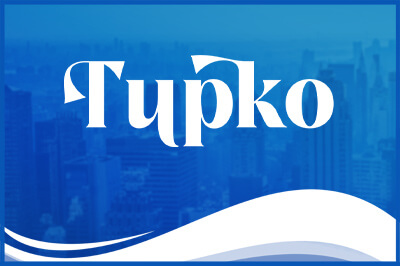

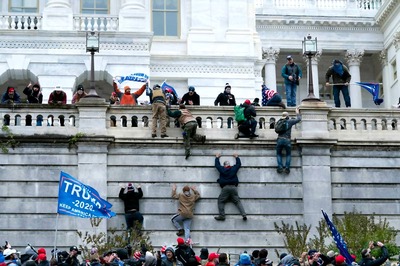


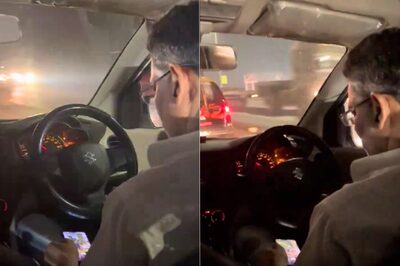
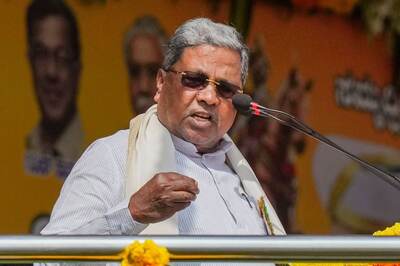
Comments
0 comment